The data from the recently released Kleiner Perkins’ 2017 Internet Trends Report covers critical eCommerce trends that are shaping the future of the market.
Here’s a look at some of the major eCommerce news impacting the industry today.
Major eCommerce trends: Growth isn’t slowing down
Online commerce sales are growing at a crazy pace globally and in the United States, specifically. In 2016, eCommerce sales in the US totalled $400 billion.
It’s a market that continues growing at an unprecedented year-over-year rate of 15%. There are a lot of articles now saying that we’re at the tipping point because the majority of consumers are willing to buy the majority of the things online without going to a physical store.
As you can see, even the pace of growth has been growing.
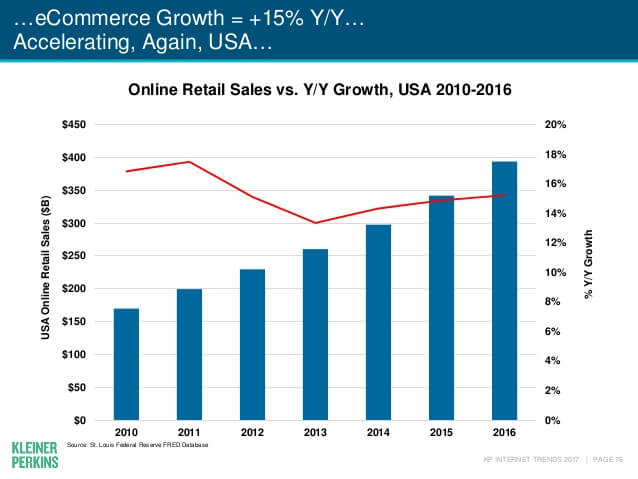
Take a look at what’s happening to big-name US retail stores: Sears is running out of cash flow, Macy’s shut down 68 stores, and that’s just the tip of the iceberg. These old-school companies struggled to adapt and evolve. As a result, they failed to keep up with increasing competition from the eCommerce sector.
According to Kleiner Perkins, retail store closings are at some of the lowest levels they have been in the last 2 decades.
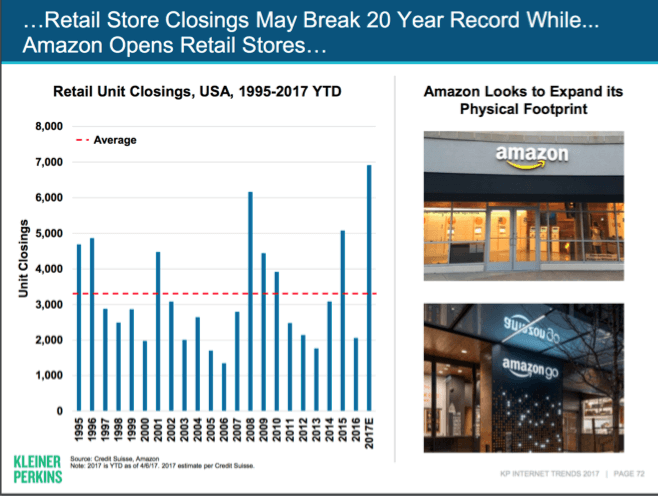
That’s another big question, because, on the other hand, a lot of online brands (including Amazon) are now opening brick-and-mortar stores.
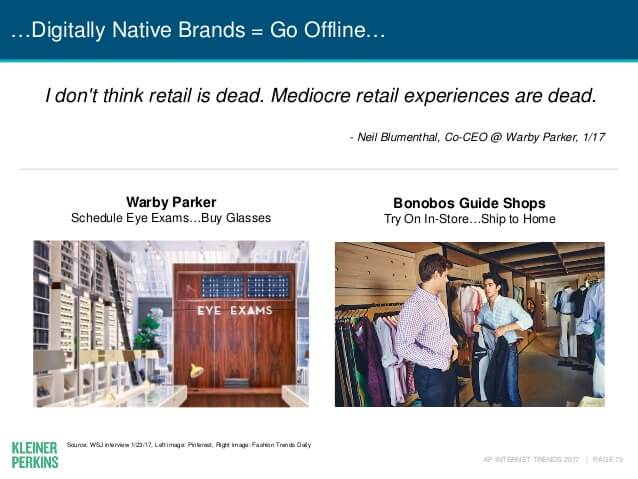
Big companies understand that if you look at the horizon 10 years from today, retail won’t be dead. It’s just that eCommerce will take on a whole new dimension of strategic value.
The brands that have already begun to put more effort into their online sales have seen it for themselves. Last quarter, Adidas grew their eCommerce business by 59% and reached €1 billion in online revenue. They expect this figure to quadruple by 2020.
And you can see the huge spike in Wal-Mart’s eCommerce revenues after they acquired Jet.com.
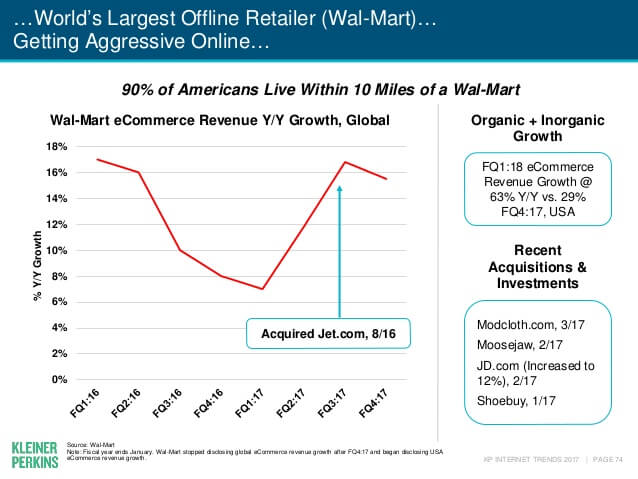
Even outside of retail, you can see that the global market is paying attention to online commerce. Many of the tech giants of the world are putting tons of investment into eCommerce.
Microsoft is now getting serious about it. Adobe recently announced that they are going aggressively into the sector. And one of the biggest recent acquisitions was Salesforce buying the eCommerce platform Demandware for $3 billion.
My prediction is that over the next few years, we’re going to see billions of more dollars thrown into eCommerce.
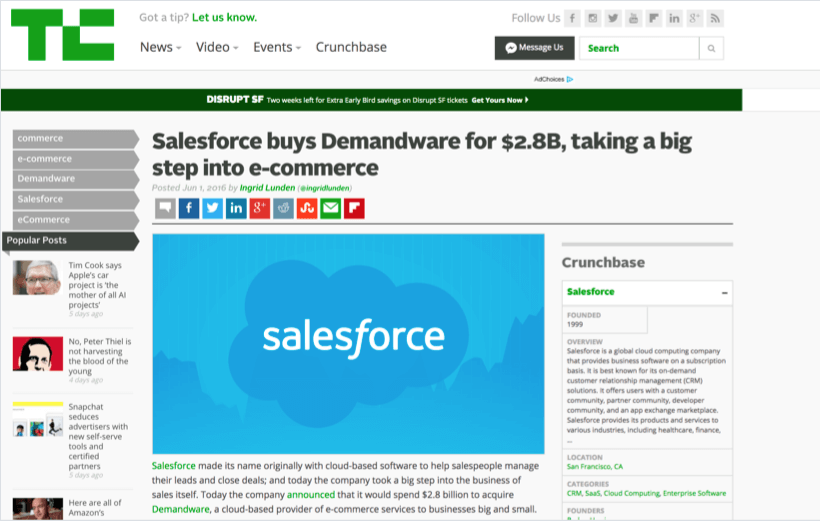
The future of eCommerce: Will Amazon eat us all?
There’s a lot of talk about if Amazon is eating the eCommerce industry.
There’s no doubt Amazon is a formidable force.
In our New York office, there’s an Amazon delivery person coming four, five or six times a day, delivering packages. We’re buying the stuff that you can probably buy at Best Buy, Sears, or Macy’s. But today, it doesn’t make sense to buy stuff at Best Buy because Amazon has the best price, the best shipping experience, and the best selection.
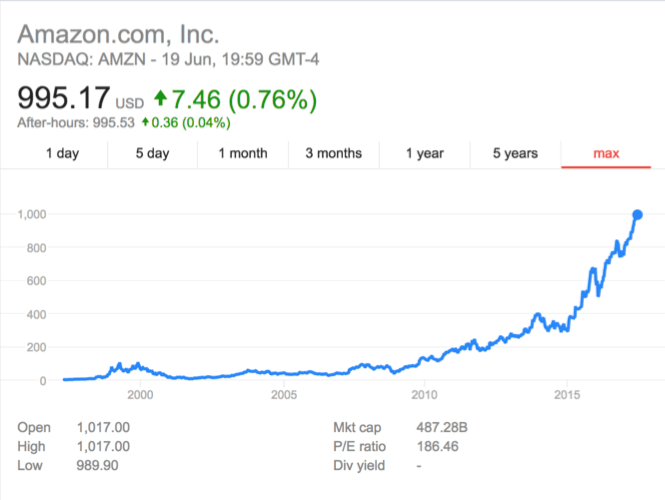
Digitally Native Vertical Commerce Brands
But not all businesses are suffering. Warby Parker is opening 25 new stores this year. Casper was recently valued at $750 million and is planning an IPO.
It’s the new, emerging brands that have managed to thrive despite increasing competition. Shopify serves SMBs, and their growth is the biggest phenomenon in public markets today. In terms of sales, they have the best multiples. And the growth in their number of merchants is just as astounding.
Many of the brands that are seeing success are highly verticalized (or what Bonobos’ founder Andy Dunn calls “digitally native vertical brands”). They sell one product, and they do it the absolute best. Whether it’s lingerie, luggage, or watches, this focus on a specific vertical allows them to grow very, very, very quickly and to literally take over whichever vertical they enter.
One of our customers is literally growing so fast that they don’t have enough space in their office for all the products they’re selling.
So, not only are there more young eCommerce businesses than ever, but they’re also seeing insane success.
So there are a few big questions to ask:
Why aren’t the smaller companies being eaten by Amazon?
Why are a lot of up-and-coming brands growing insanely fast while big companies are shutting down?
What the hell is happening in the market, and how does it make sense?
Amazon is not eating eCommerce. It’s eating a very specific type of eCommerce.
The Macy’s and Best Buys of the world will probably lose to Amazon. But online-first businesses likely won’t.
How online marketing impacts the future of eCommerce
Online marketing is becoming the number one determining factor for a company’s success or failure.
I was at a Goldman Sachs dinner a few weeks ago, with CEOs of leading eCommerce brands. The facilitator asked, “What’s on your minds?”
And everyone had the same concerns:
- How are you going to get consumer attention?
- How are you going to build a community?
- How do you get people to care about you?
Competition for consumer attention and loyalty is getting more and more intense. It’s why efficient online marketing is so crucial.
Social is a big part of it, influencers are another big chunk of it, and search is another big part. But everything is really about building a phenomenal brand in front of consumers.
Think about yourself as a consumer, what type of brands do you really care about and why? And most importantly, how hard is it for a brand to not only get your attention, but get you to really truly care?
Over the last few years, we’ve been experiencing insane changes in the marketing world. Marketers no longer believe in traditional ads. The Snapchat generation doesn’t click on anything. Consumers are less likely to trust brand marketing.
And user-generated content has become a core part of a strong online marketing strategy.
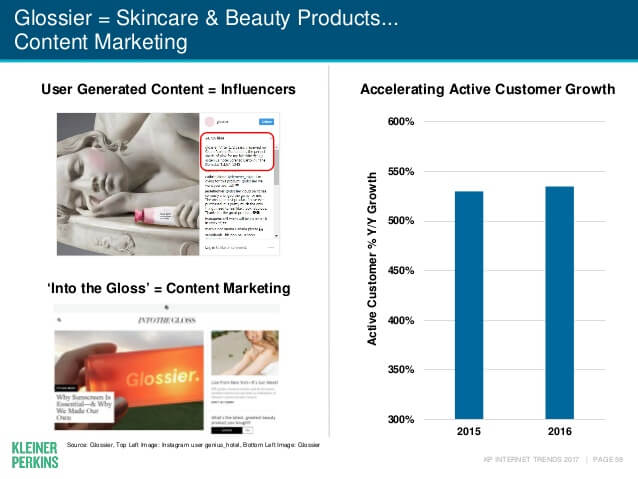
A lot of people are starting to talk about user-generated content. And people are really starting to understand the importance of it for their business.
No one doubts that consumers trust content from their peers much more than official brand content. With user-generated content marketing, you’re no longer telling consumers: ‘Hey, look how great I am!’. What you’re telling them is: ‘Hey, look at what other people are saying about me.’
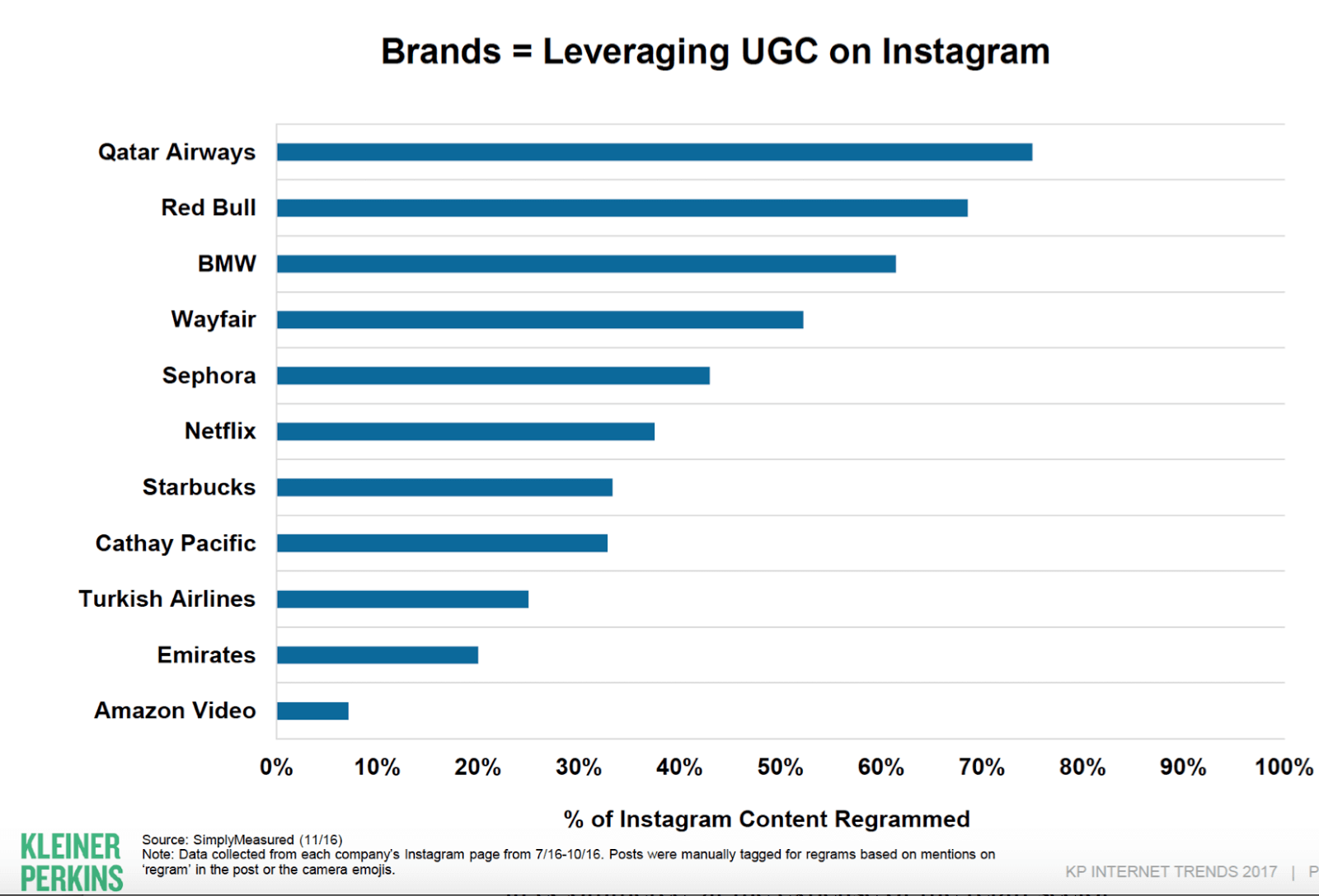
The Kleiner Perkins report shows the huge value and importance of UGC. But they aren’t the only experts saying that the way forward in consumer branding is via UGC.
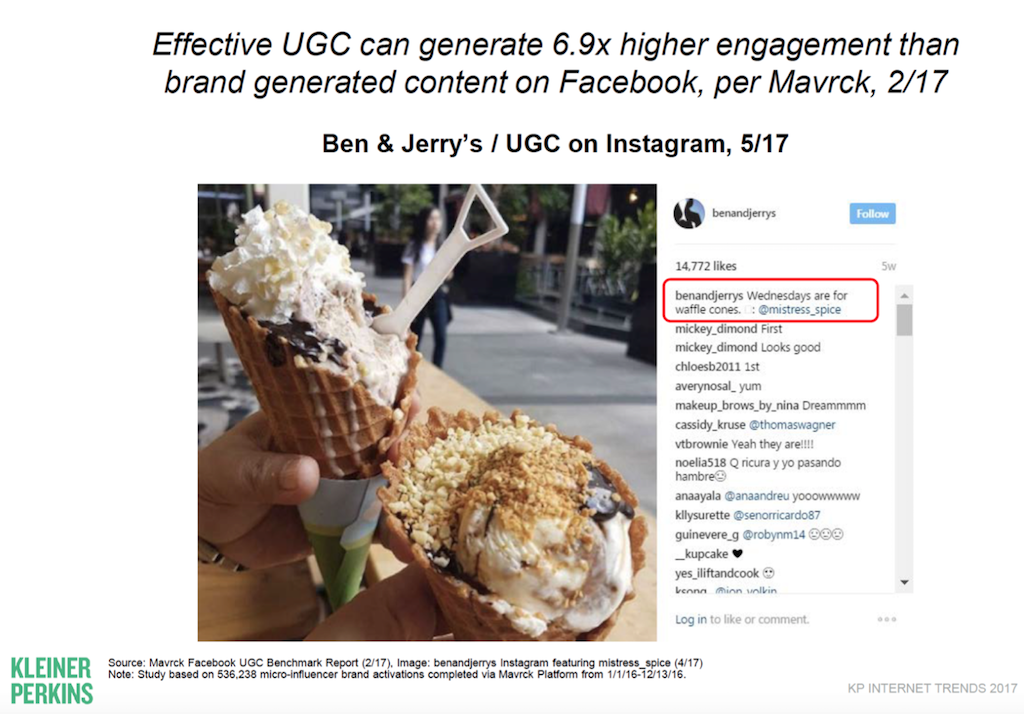
Gartner is saying it.
Forrester is saying it.
But most significantly, brands are seeing it for themselves.
UGC is becoming the single most important and effective driving force for brands. At a meteoric speed.
What can your brand take away from these rooftop insights?
Let’s rewind to the major concerns for brands: building community, getting consumer attention, and getting people to care.
If building a phenomenal brand is the answer to these pain points, then UGC is the answer to building a phenomenal brand:
- Encourage your customers to share the products they love, and foster a community through that shared conversation.
- Use your customers’ most compelling content in your marketing efforts to draw consumers out of ad-blindness.
- And most importantly, listen to what your customers are saying. UGC isn’t just about sharing photos and reviews. It’s about giving your customers a voice and a stake in your brand. Get them to care about your products by showing them you care about what they have to say.













 Join a free demo, personalized to fit your needs
Join a free demo, personalized to fit your needs